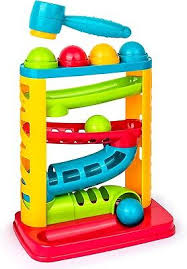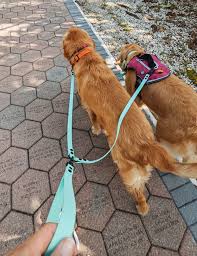The Importance of Toys for Your Dog
Toys are not just playthings for dogs; they serve a vital role in their physical and mental well-being. Providing your furry friend with the right toys can contribute to their overall happiness and health.
Physical Exercise
Interactive toys such as balls, ropes, and frisbees are excellent for engaging your dog in physical exercise. Regular play sessions with these toys help keep your dog active, maintain a healthy weight, and improve muscle tone.
Mental Stimulation
Chew toys, puzzle toys, and treat-dispensing toys are great for providing mental stimulation to your dog. These toys challenge their problem-solving skills, prevent boredom, and reduce destructive behavior that may result from lack of mental stimulation.
Bonding Time
Playing with your dog using toys strengthens the bond between you and your furry companion. It creates opportunities for quality time together, enhances communication, and fosters trust and affection between you and your pet.
Dental Health
Certain toys like dental chews and rubber chew toys can help promote good dental hygiene in dogs. Chewing on these toys can reduce plaque buildup, massage gums, and freshen breath, contributing to better oral health.
Choosing the Right Toys
When selecting toys for your dog, consider their size, age, chewing habits, and preferences. Ensure that the toys are safe, durable, and suitable for your dog’s individual needs to maximize the benefits they provide.
Top FAQs About Choosing the Best Toys for Your Dog
- What are the best types of toys for my dog’s breed?
- How can I choose safe toys for my dog?
- Are there any toys that can help with teething puppies?
- What are interactive toys and why are they beneficial?
- How often should I rotate my dog’s toys to keep them engaged?
- Can certain toys help prevent separation anxiety in dogs?
What are the best types of toys for my dog’s breed?
Selecting the best types of toys for your dog’s breed is essential to cater to their specific needs and preferences. Different dog breeds have varying characteristics, such as size, energy levels, and chewing habits, which influence the type of toys they enjoy. For example, high-energy breeds like Border Collies may benefit from interactive toys that stimulate both their physical and mental abilities. On the other hand, small breeds like Chihuahuas may prefer soft plush toys for gentle play. Understanding your dog’s breed traits and observing their play style can help you choose toys that are engaging, safe, and suitable for their individual requirements.
How can I choose safe toys for my dog?
When selecting safe toys for your dog, it is essential to consider a few key factors to ensure your furry friend’s well-being. Opt for toys that are specifically designed for dogs and made from non-toxic materials to prevent any harm from chemicals or choking hazards. Choose toys that are appropriate for your dog’s size and chewing habits to minimize the risk of ingestion or injury. Inspect toys regularly for signs of wear and tear, such as small pieces that could be swallowed, and replace them when necessary. Additionally, supervise your dog during playtime with new toys to gauge their interaction and prevent any potential accidents. By being mindful of these considerations, you can choose safe toys that provide enjoyment and enrichment for your beloved canine companion.
Are there any toys that can help with teething puppies?
Teething is a natural process for puppies, but it can be uncomfortable and sometimes painful. Fortunately, there are specific toys designed to help teething puppies during this stage. Chew toys made of durable materials like rubber or nylon can provide relief by soothing their sore gums and satisfying their urge to chew. These toys also help redirect their chewing behavior away from furniture or shoes, promoting good oral hygiene and preventing destructive habits. It’s important to choose teething toys that are safe, appropriate for your puppy’s age and size, and supervise their playtime to ensure they are using the toys properly.
What are interactive toys and why are they beneficial?
Interactive toys are specially designed playthings that engage dogs in stimulating activities requiring their participation. These toys often involve problem-solving tasks, treat-dispensing features, or physical challenges that encourage dogs to use their intelligence and energy during playtime. Interactive toys offer numerous benefits for dogs, including mental stimulation, physical exercise, and the opportunity for bonding with their owners. By promoting mental engagement and physical activity, interactive toys help prevent boredom, reduce destructive behavior, and enhance the overall well-being of dogs by keeping them entertained and mentally sharp.
How often should I rotate my dog’s toys to keep them engaged?
Rotating your dog’s toys regularly is a great way to keep them engaged and prevent boredom. It’s recommended to switch out your dog’s toys every few days to maintain their interest and excitement. By introducing new toys or reintroducing ones that have been put away for a while, you can stimulate your dog’s curiosity and provide them with fresh sources of entertainment. This practice not only keeps playtime fun and engaging but also helps extend the lifespan of the toys by preventing them from becoming overly familiar or worn out.
Can certain toys help prevent separation anxiety in dogs?
Certain toys can indeed help prevent separation anxiety in dogs. Interactive toys that provide mental stimulation and engage the dog’s attention can be beneficial in keeping them occupied and distracted while their owners are away. Toys that dispense treats or require problem-solving skills can help alleviate boredom and anxiety by providing a positive outlet for their energy. Additionally, having familiar toys around can offer a sense of comfort and security to dogs during times of separation, reducing their stress levels and promoting a sense of calmness. It is important to introduce these toys gradually and make them part of the dog’s routine to establish a positive association with playtime and alone time.



